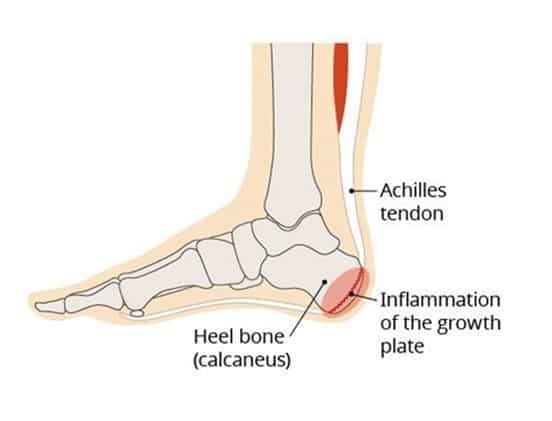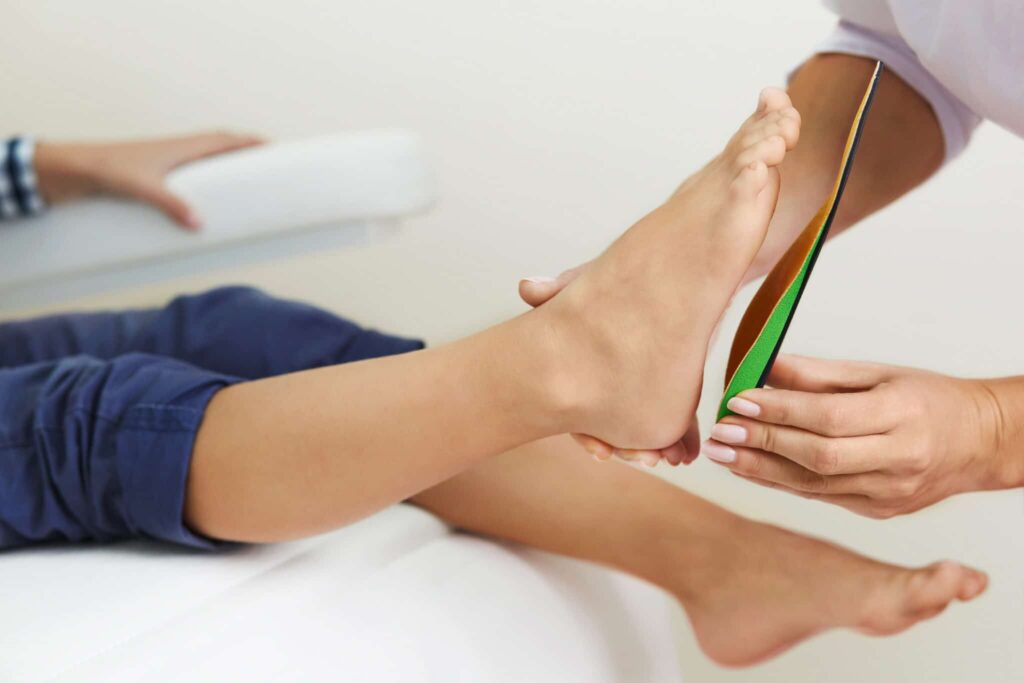Severs Disease
Are you worried about your child’s heel pain? Don’t let Severs Disease disrupt their active lifestyle any longer!
What Is
Severs Disease?
Sever’s disease, also known as calcaneal apophysitis, is a common condition that affects children and adolescents during their growth spurts. It is characterised by pain and inflammation in the heel area, specifically at the growth plate of the heel bone (calcaneus).
The condition typically occurs when the heel bone grows faster than the Achilles tendon, causing tension and stress on the growth plate. This can lead to microfractures and irritation, resulting in heel pain.
Sever’s disease is more common in physically active children involved in sports that involve running and jumping.

At ModPod we are experts at providing comprehensive care for effectively treating Severs Disease.

Conveniently
Located Clinic
5 Convenient Locations Across Sydney

EXPERIENCE
Treated Over 30,000 Patients

Non-Surgical
Treatments
We Can Help Get You Get Improvement Without Surgery

New Patient
Offer
New Patient Offer – $15 OFF First Visit
Why A Podiatrist Is The
Best Choice For Severs Disease
- Expertise: Our team of highly skilled podiatrists has extensive experience in diagnosing and treating Severs Disease. We stay up-to-date with the latest advancements in podiatric medicine to offer the most effective and personalised solutions.
- Personalised Care: We understand that every child is unique, and their treatment plan should reflect that. Our podiatrists conduct a thorough evaluation of each patient’s condition and develop a tailored treatment strategy to address their specific needs.
- State-of-the-Art Facilities: Our clinic is equipped with advanced diagnostic technology and cutting-edge treatment options to ensure accurate assessments and exceptional outcomes. We prioritise providing a comfortable and welcoming environment to make your child’s experience as pleasant as possible.
- Comprehensive Treatment Approach: Our holistic approach to Severs Disease treatment focuses not only on managing symptoms but also on addressing the underlying causes. We combine various modalities, including physical therapy, orthotics, and exercise programs, to promote healing and prevent future recurrences.
- Compassionate Team: We genuinely care about our patients’ well-being and strive to create a nurturing atmosphere throughout their journey to recovery. Our friendly staff will be there to answer any questions and provide ongoing support and guidance.

Successful Treatments

Get Back To Activity Sooner

Evidence Based Approach

Walk Pain Free Again

You Are In Safe Hands
How It We Treat Severs Disease
Your podiatrist will start out with a conservative treatment plan and only move on to more aggressive measures if needed. The following list is some of the approaches we take.
- Thorough Assessment: Our podiatrists will conduct a comprehensive examination, including a review of medical history, physical assessment, and possibly imaging tests if needed, to accurately diagnose your child’s condition.
- Prescribing Custom Orthotics or Semi Custom Orthotics which will give significant heel support & pain relief to your child
- Advise on supportive shoes, to reduce stress around the heel
- Targeted Pain relief such as ibuprofen
- Rehabilitation and prevention: Exercises that help stretch and loosen the affected ligaments, muscles, and tendons.
- Ongoing Support: Our commitment doesn’t end with the treatment. We will provide continuous support and monitor your child’s progress, making any necessary adjustments to the treatment plan to ensure optimal results and long-term relief.

A biomechanical examination typically involves the assessment of movement patterns when you are walking or running. The goal is to evaluate how the body is functioning, identify any potential areas of weakness or imbalance, and make recommendations for corrective exercises or treatments.
The examination may include a variety of tests and measurements, such as range of motion assessments, muscle strength, gait analysis, and postural analysis. At ModPod we utilise video treadmill assessments and digital pressure analysis.
Custom orthotics are medical devices that are designed to provide support, cushioning, and correction to the feet and lower extremities. They are typically made from materials such as foam, plastic, or leather, and are custom-fitted to an individual’s foot shape and gait.
Orthotics can be used to treat a wide range of foot and lower limb conditions, including Mortons Neuroma, plantar fasciitis, flat feet, high arches, and heel spurs. They can also be used to provide support and cushioning for individuals with diabetes or arthritis.
At ModPod we have over 20 years of experience in prescribing orthotics. We would first start with a biomechanical assessment, moving on to a 3d scan of your foot. This scan is sent to our orthotic laboratory who manufactures the orthotic which is ready for fitting after 2 weeks.







